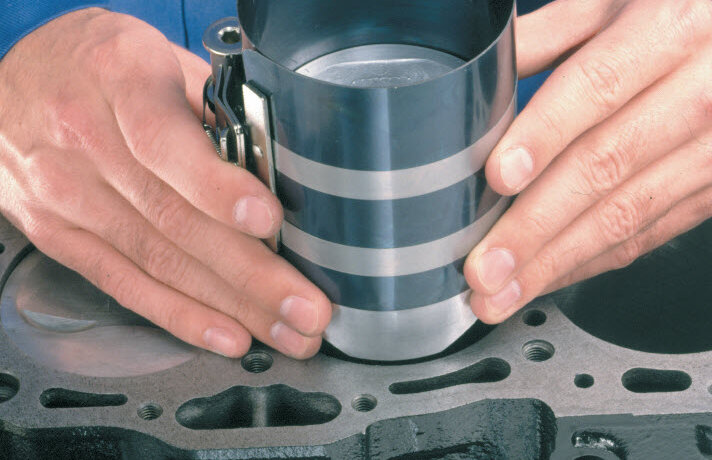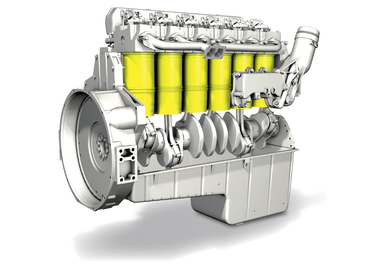
Inserting the piston into the cylinder bore
Back to search
Information on use
What has to be observed when inserting the piston into the cylinder bore? What should you do if the piston cannot be pushed into the cylinder? Can you work with a hammer? And why should you always make sure to check the piston ring clamp? The answers are here.
- Clean the sealing area of the engine block thoroughly of fragments of gaskets if it was not reworked during the reconditioning.
- Clean all tapped holes carefully from dirt, oil and coolant agent which may still be there.
- Carry out all cleaning work before installing the pistons in the cylinder.
- Wet all surfaces on the piston with fresh engine oil – do not forget the piston pins and connecting rod bearings.
- Note the direction of installation of the piston (installation markings on the piston crown, valve pockets).
- Clean the cylinder bore again with a cloth and also wet this with engine oil.
- Check your piston ring scuff band for damage and dents and remove them or replace the tool if necessary.
- During piston installation, ensure that the piston ring clamp or the conical assembly sleeve lies flat on the cylinder head sealing face.
- Do not install the piston in the engine without using a fitting tool (risk of injury, risk of ring breakage).
- A large amount of pressure must not be necessary when installing the piston. If a piston cannot be pushed into the cylinder, always check the piston ring clamp. Do not turn the opening of the clamp so that it lines up with the joint ends of the rings.
- When using a hammer handle for installation, only the weight of the hammer may act on the piston crown. Never use the hammer to drive the piston into the cylinder with force. If the piston rings do not break during installation, they can still be bent and can no longer fulfil their function completely later during engine running.
- Installation using force not only damages the rings, but can also damage the piston. This is particularly the case for pistons in petrol engines. On these engines, the top and ring lands are extremely thin in some cases and may crack slightly or break through with an impact load. The result is loss of power and expensive repairs in the short-term.
- Avoid dirt and sand falling in to the cylinder after the pistons have been inserted. Where necessary, place or insert clean cloths on/in the bores to prevent avoidable dirt contamination. Particularly when working in dusty environments and/or in open air.
